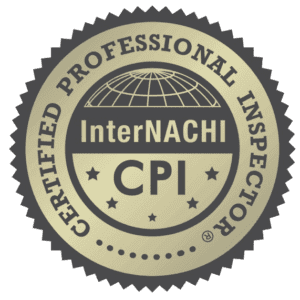Humidity and Your Attic or Crawlspace (Part 2)
In the first part of this series on humidity, we went through the basics of what humidity is and how it works. In this second part, I want to talk about humidity in unconditioned spaces of your home and how not correctly managing the humidity in those spaces can leads to mold growth.
Why Should I be concerned with Humidity in My Attic?
For the sake of keeping this article short, I will mostly talk about attic space humidity, but most of the points here will count towards crawlspaces and other unfinished areas as well. So why should you be concerned with the level of humidity in your attic?
If an attic is poorly ventilated, the temperature of that attic space can reach up to 150° Fahrenheit during a hot summer day. As you may remember from my last humidity post, the warmer air gets the more capacity it has to carry and also absorb water droplets. Let's say the attic space heats up to 110° at 40% relative humidity during a warm summer day., but overnight your attic cools to 70°. At that temperature, the new relative humidity would be over 100% (which is not possible), so the excess water will start to condense in the attic space.
Maybe a better visual for what is happening is imaging a semi-damp sponge being ringed out by compressing its volume. Now, a lot of the water may re-evaporate the next day, but it's not guaranteed as some hot days are followed by cooler and shadier days with rain. When a surface is damp for a semi-prolonged duration (a day or even less than that), mold will start to form, and that is not desired.
How do I control humidity in my attic space?
I will speak only for unfinished attics (or crawlspaces) because the best way to control the humidity of any space is to condition it (have HVAC running in the attic), but that can also run up your electrical bills and is not ideal for everyone. There are two critical parts to control humidity in unconditional spaces to ensure excessive humidity does not create water and mold issues, ventilation and insulation:
Ventilation
The primary purpose of ventilation in unconditioned spaces is to replace the hot, humid air in the attic with cooler, less humid air. I think most of us learned in junior high school science that hot air rises. This is an essential concept for designing properly ventilated attic spaces. We want to utilize what is called the stack effect to ventilate properly, which means hot air rises and is vented out the top, but will subsequently pull cooler air from the bottom of the attic space.
The best way this is achieved is by having a ridge vent at the top of the attic space and soffit vents at the lower sides of the attic. You can also use an attic fan to blow the hot air out the top mechanically, but still, need to have soffit vents to pull air from down below. The one issue I see with attic fans is they tend to breakdown over time, and most people don't tend to check if they are running or not, so it defeats the purpose of having them.
Insulation
One topic we have not talked about yet is localized humidity. While you can have an attic space that reads 110° at 40% humidity, other areas might have more localized temperatures and humidities. An excellent example of this is an un-insulated HVAC duct in the attic. The duct temperature may be 65° and cause the air around it to drop in temperature. The other issue with this is the drop in air temperature can cause the local humidity to reach saturation and for condensation to start occurring.
Another potential area where lack of insulation is a concern is your attic floor, which is the boundary between your conditioned home and the attic. If you do not have insulation in the attic space and are running your HVAC, the inside of the attic floor can locally have temperatures 30° to 50° less than the attic temperature. Having the appropriate levels of insulation per ASHRAE standards is not only important for keeping your home comfortable, but also your attic space dry.




![[Podcast] Mythbusting with a Mold Expert](https://homeinspectiongeeks.com/wp-content/uploads/2020/06/mold_c7167f871a20ddb0742b5ecee90df176_2000-80x80.jpg)
